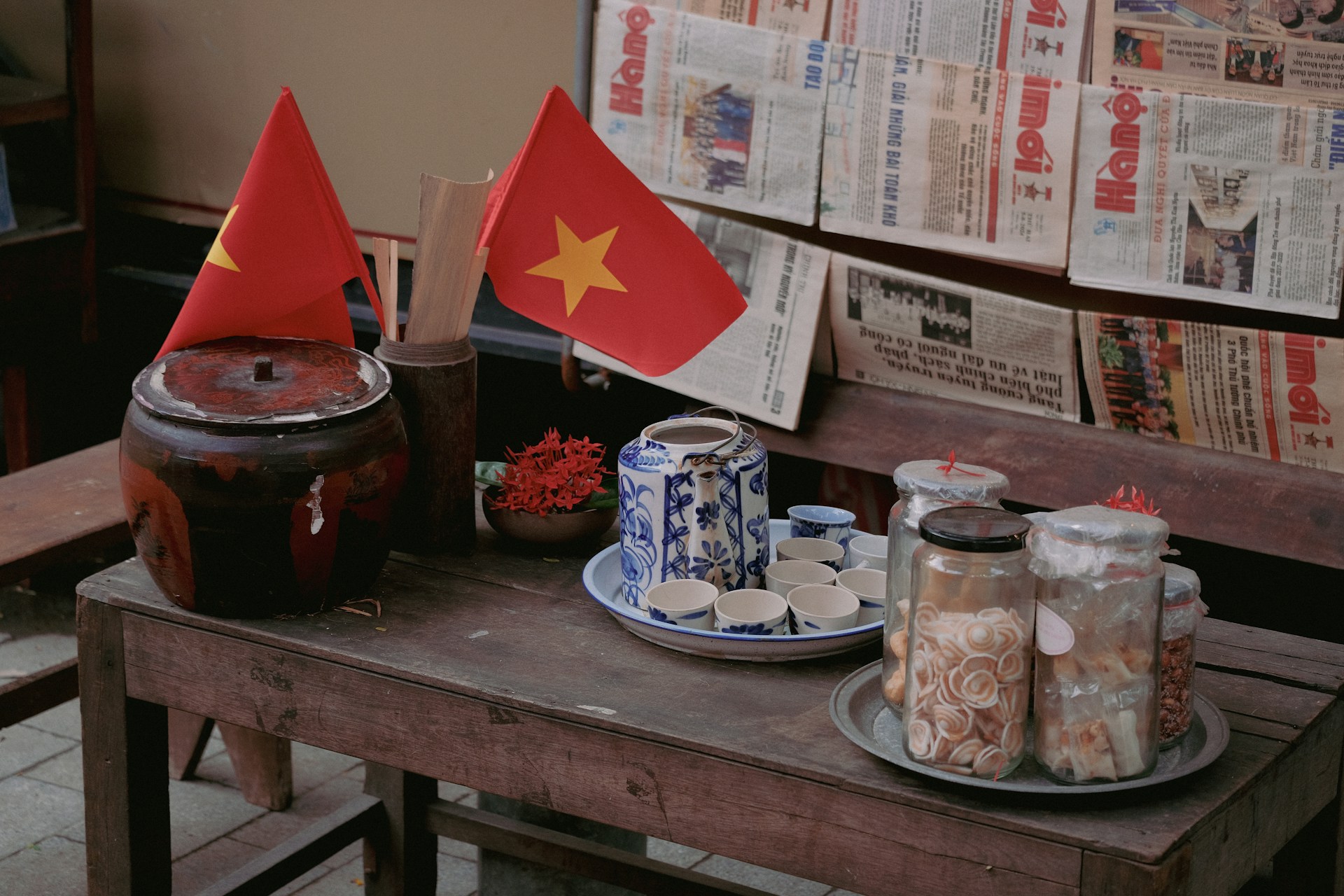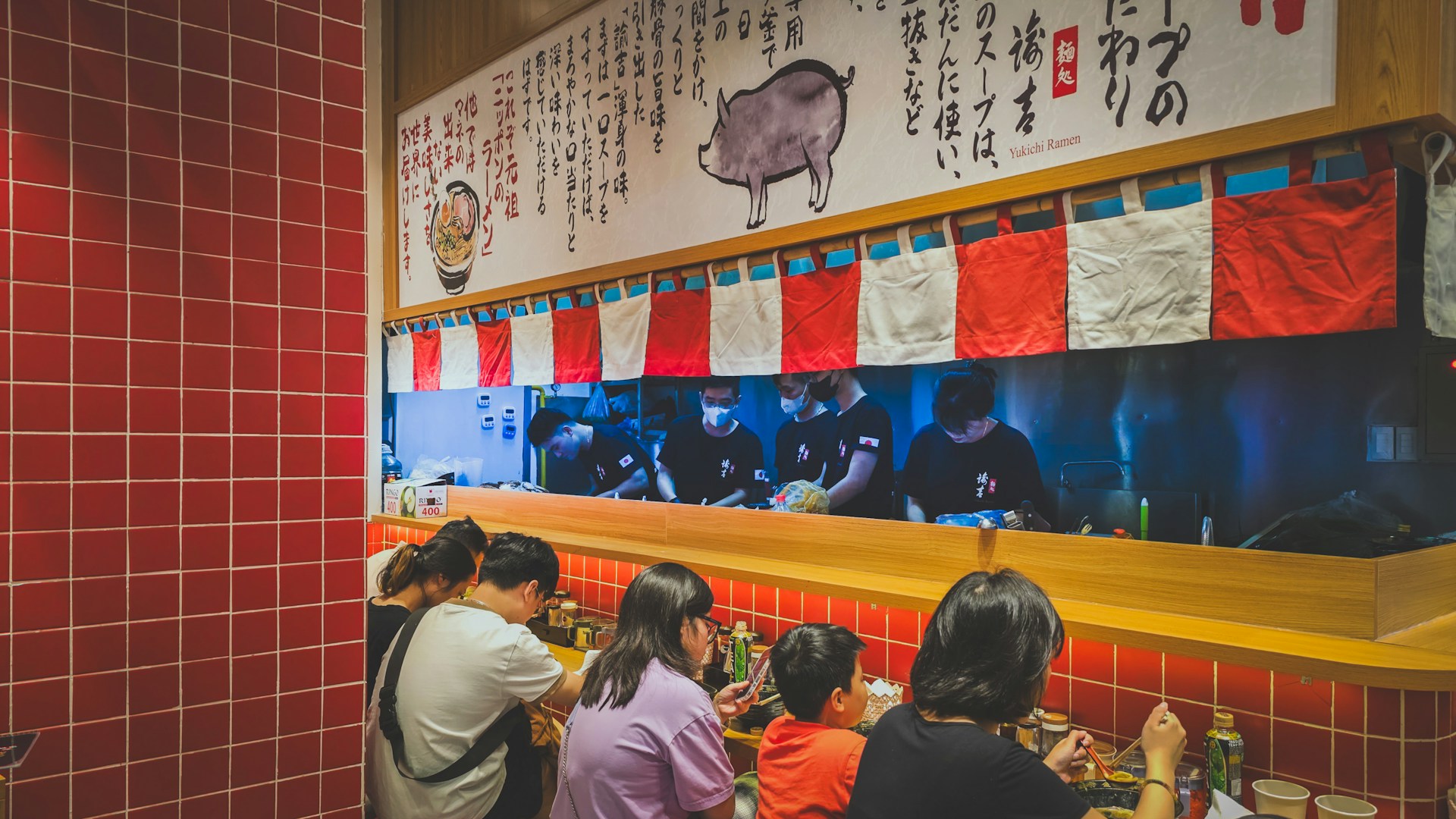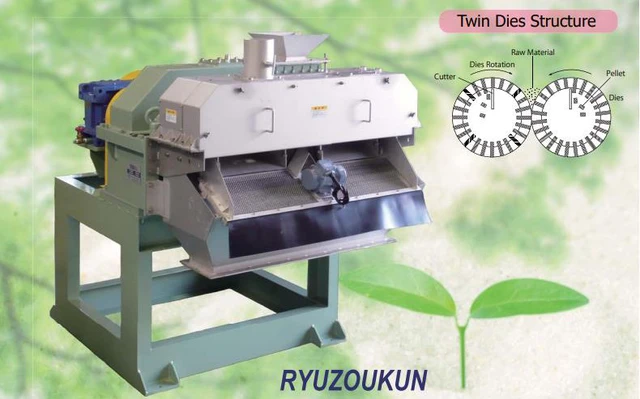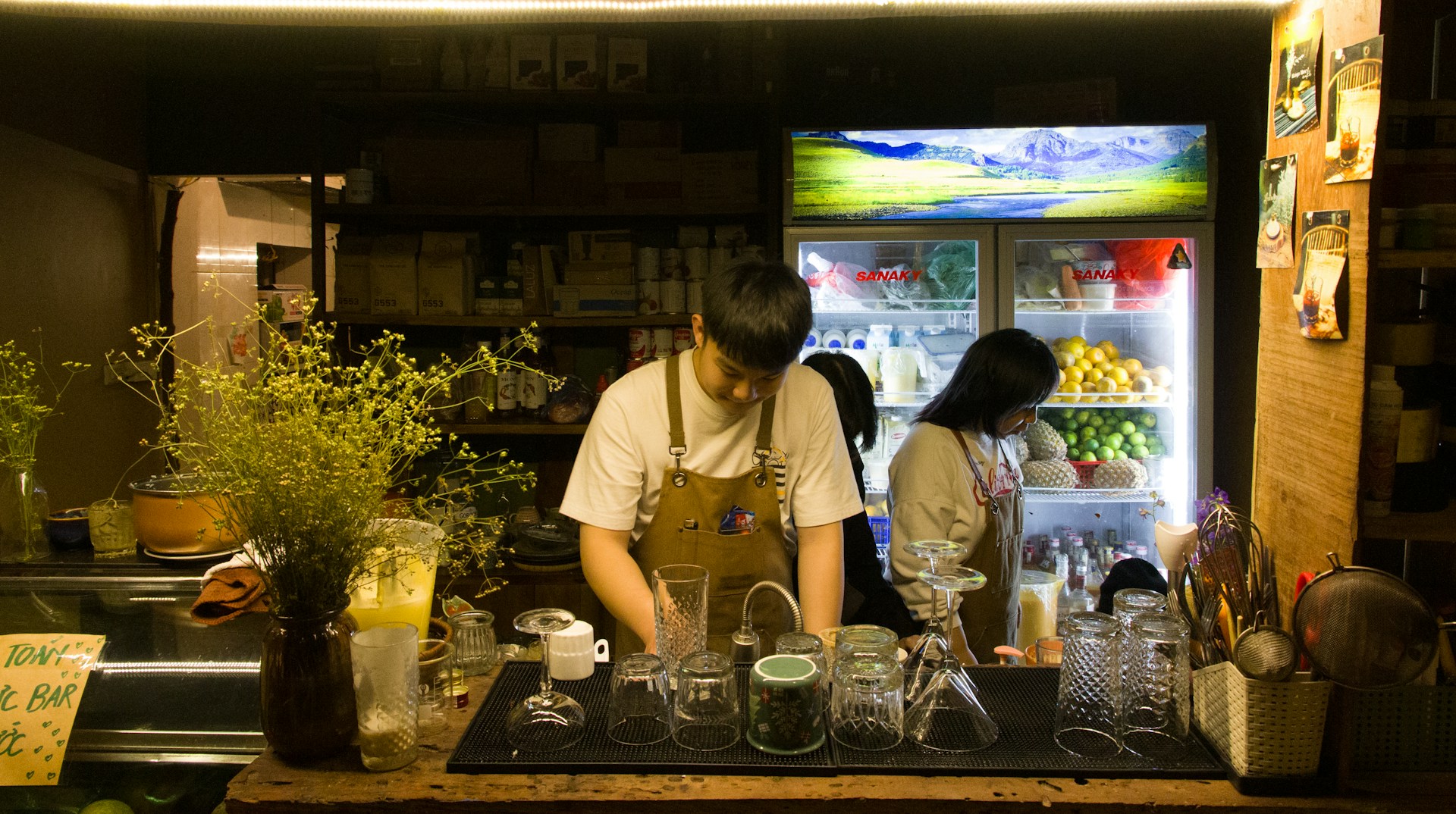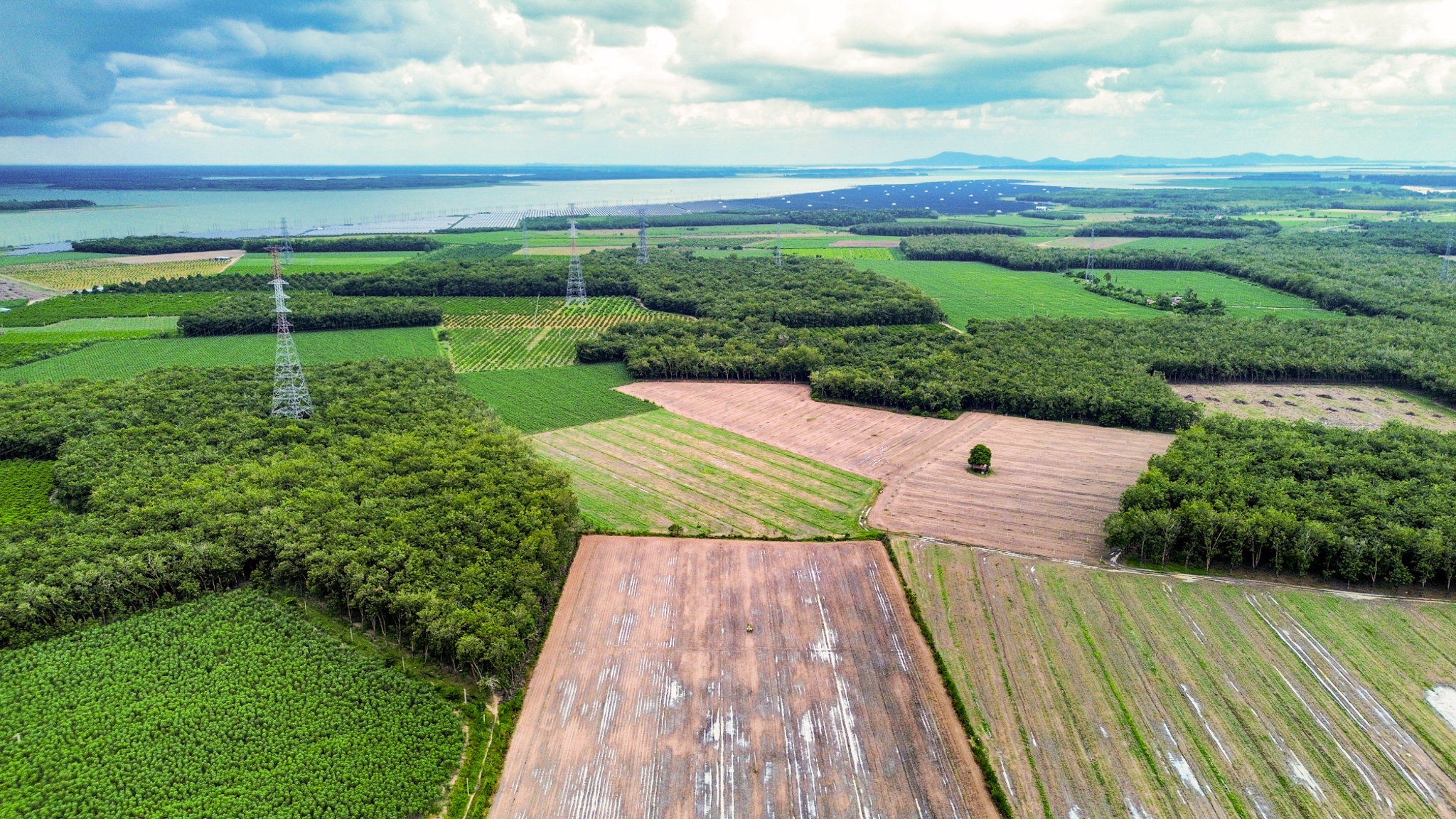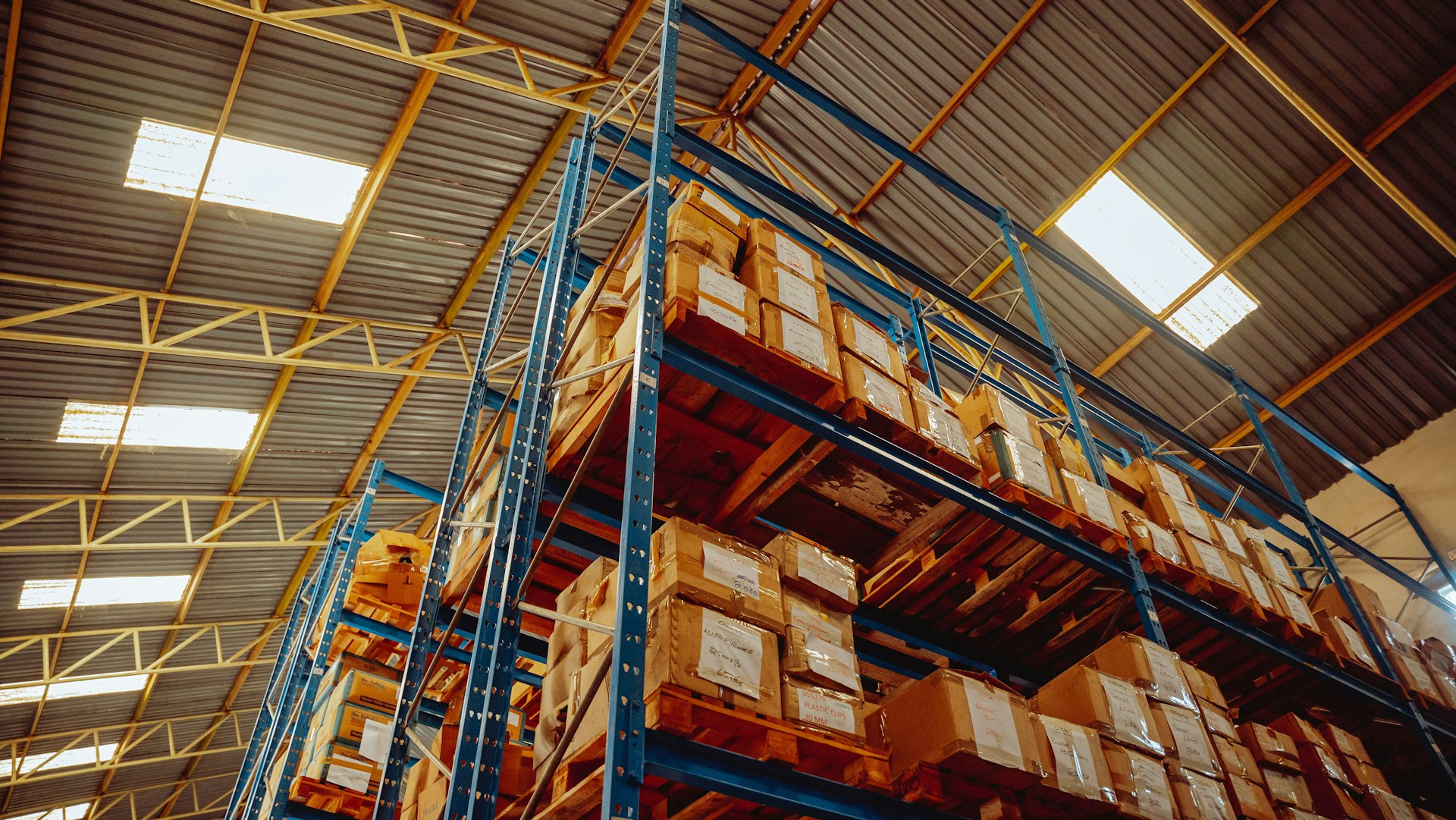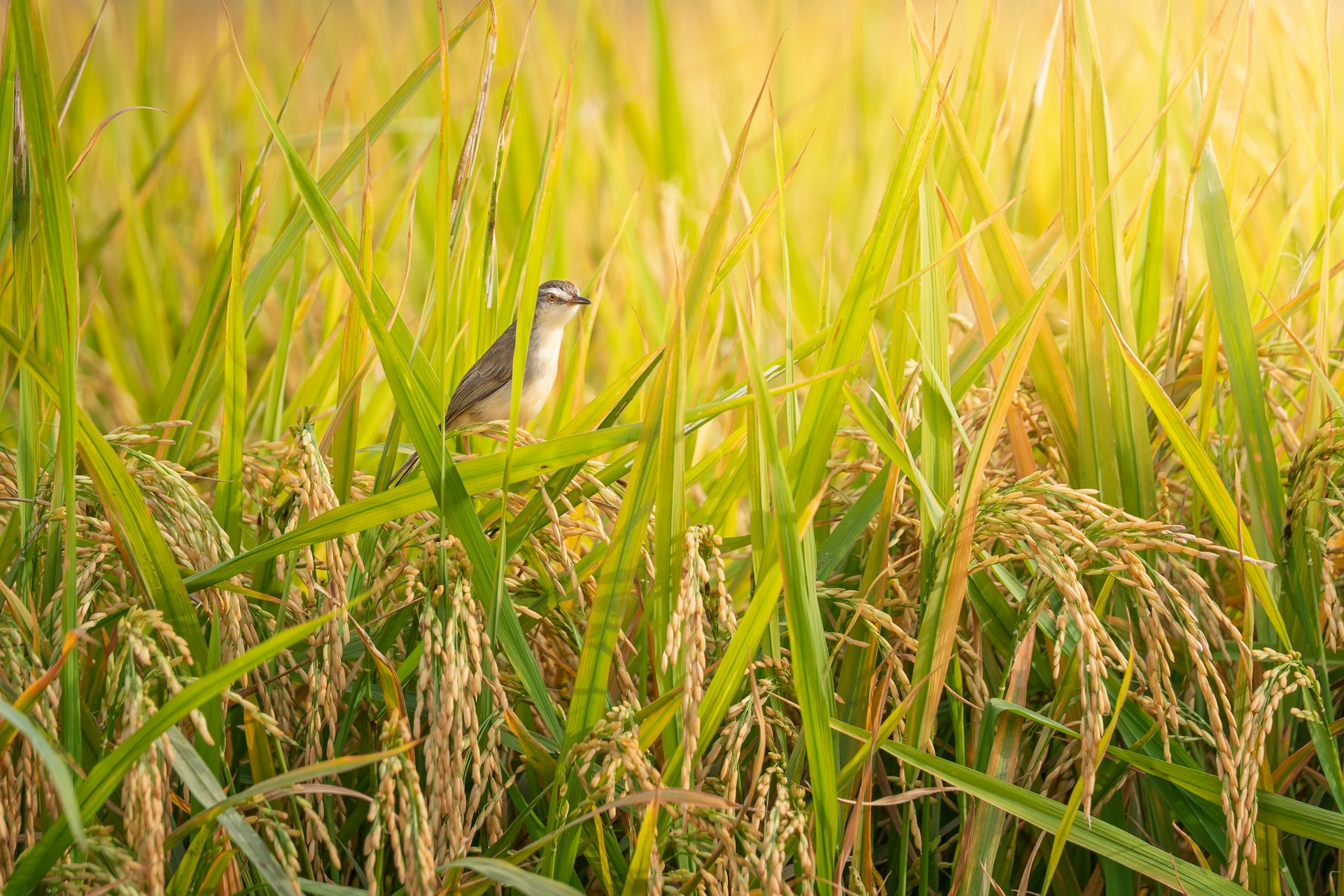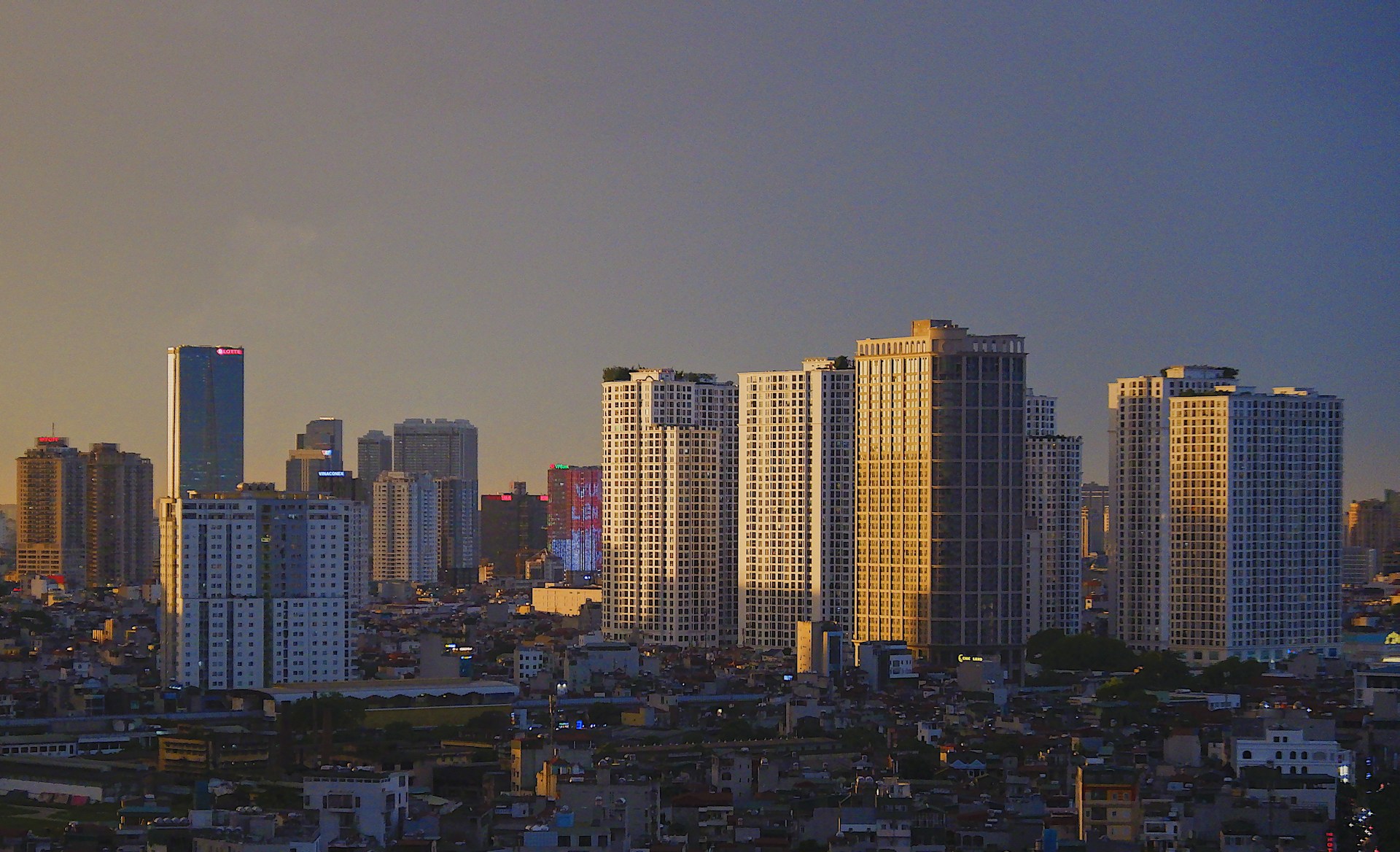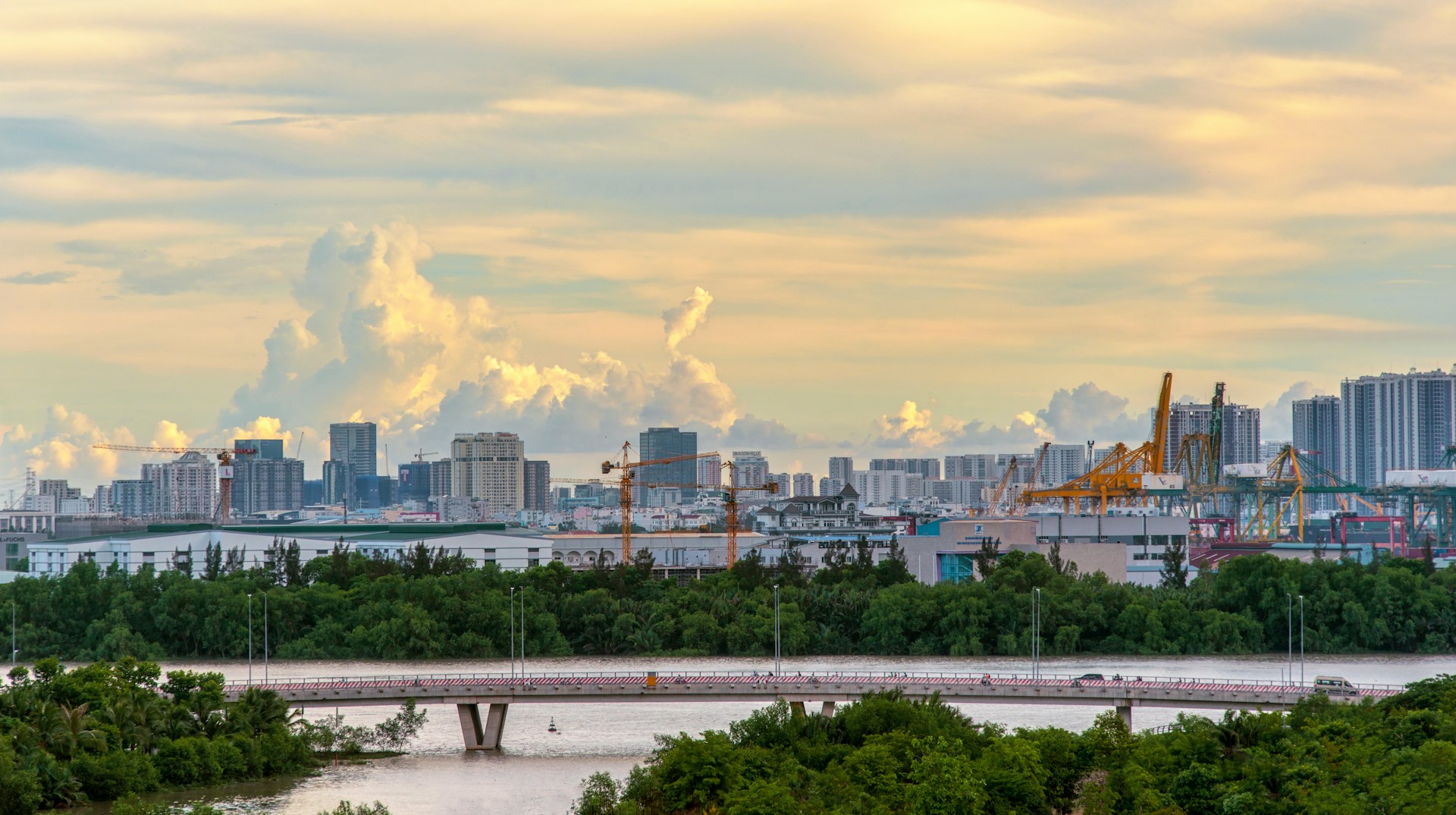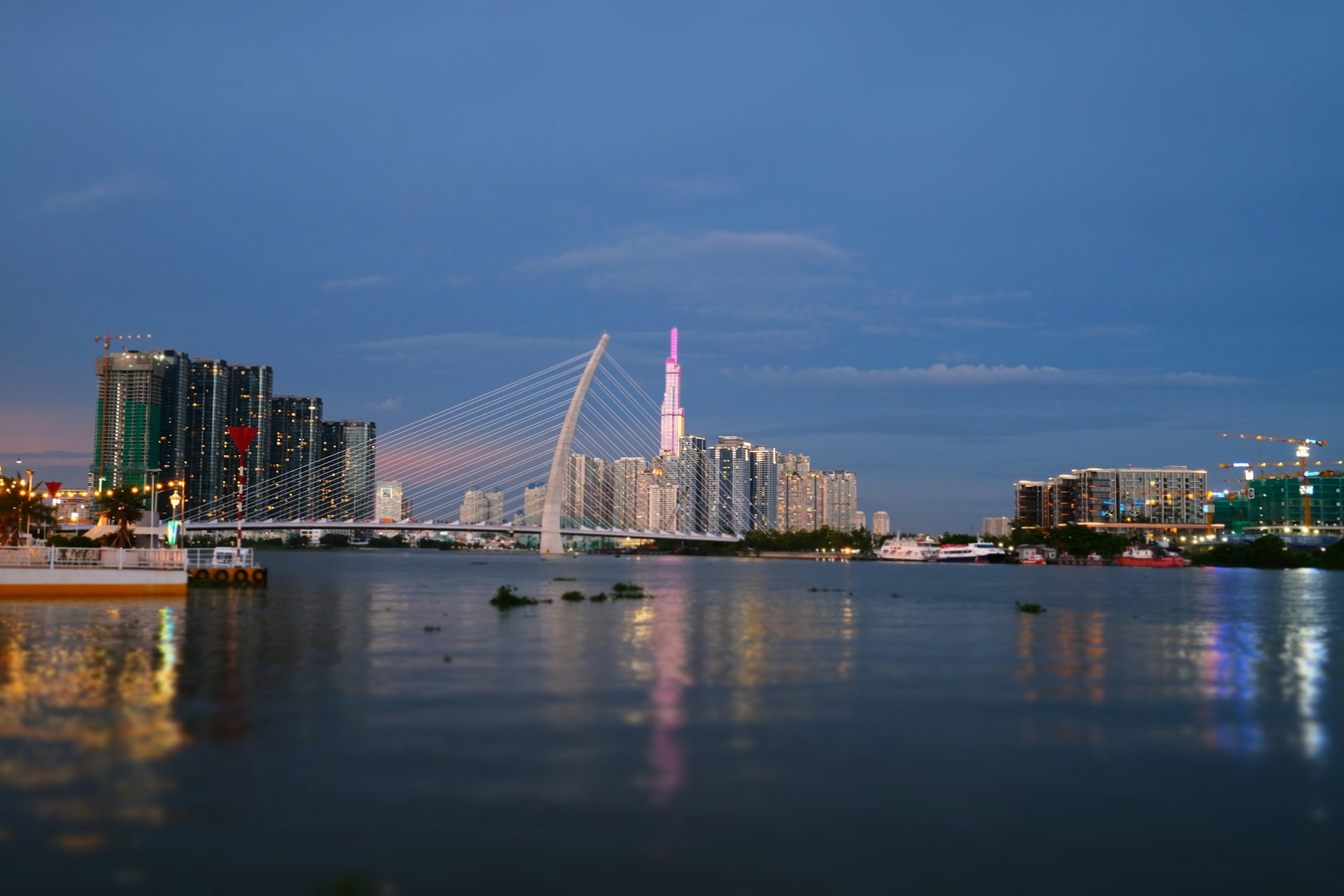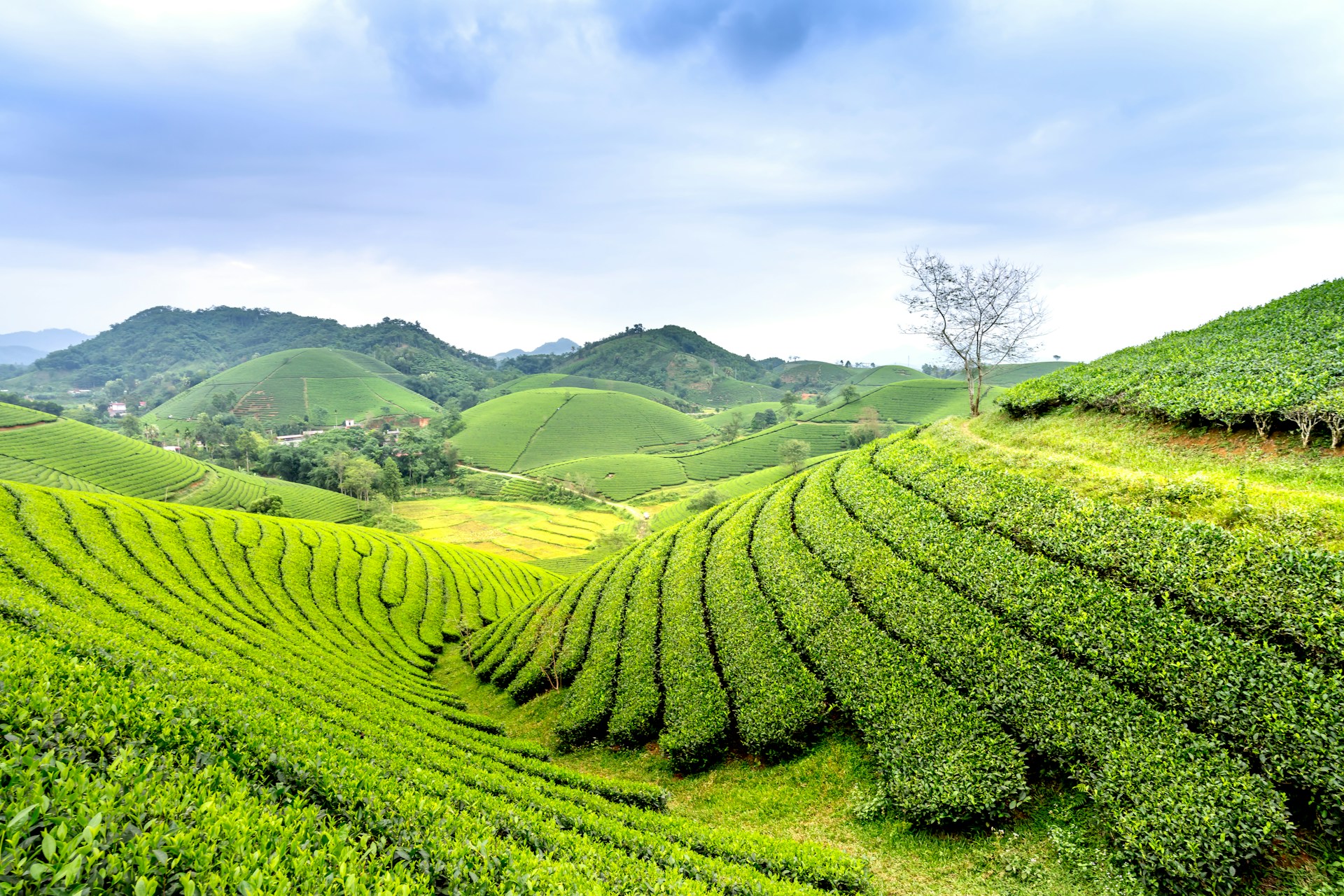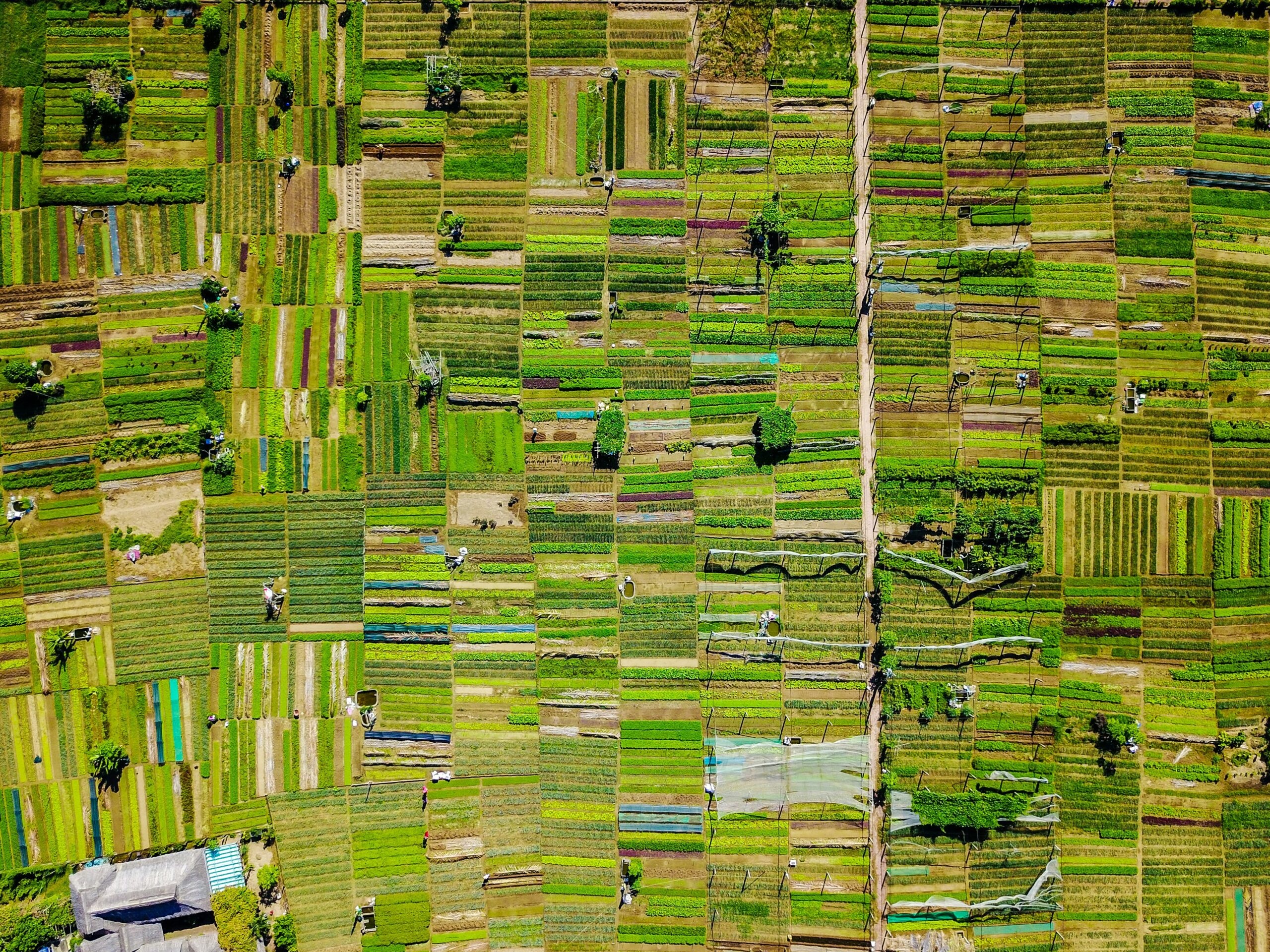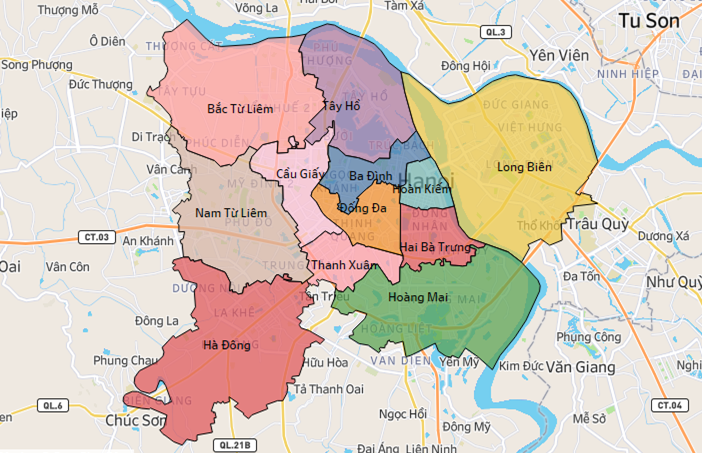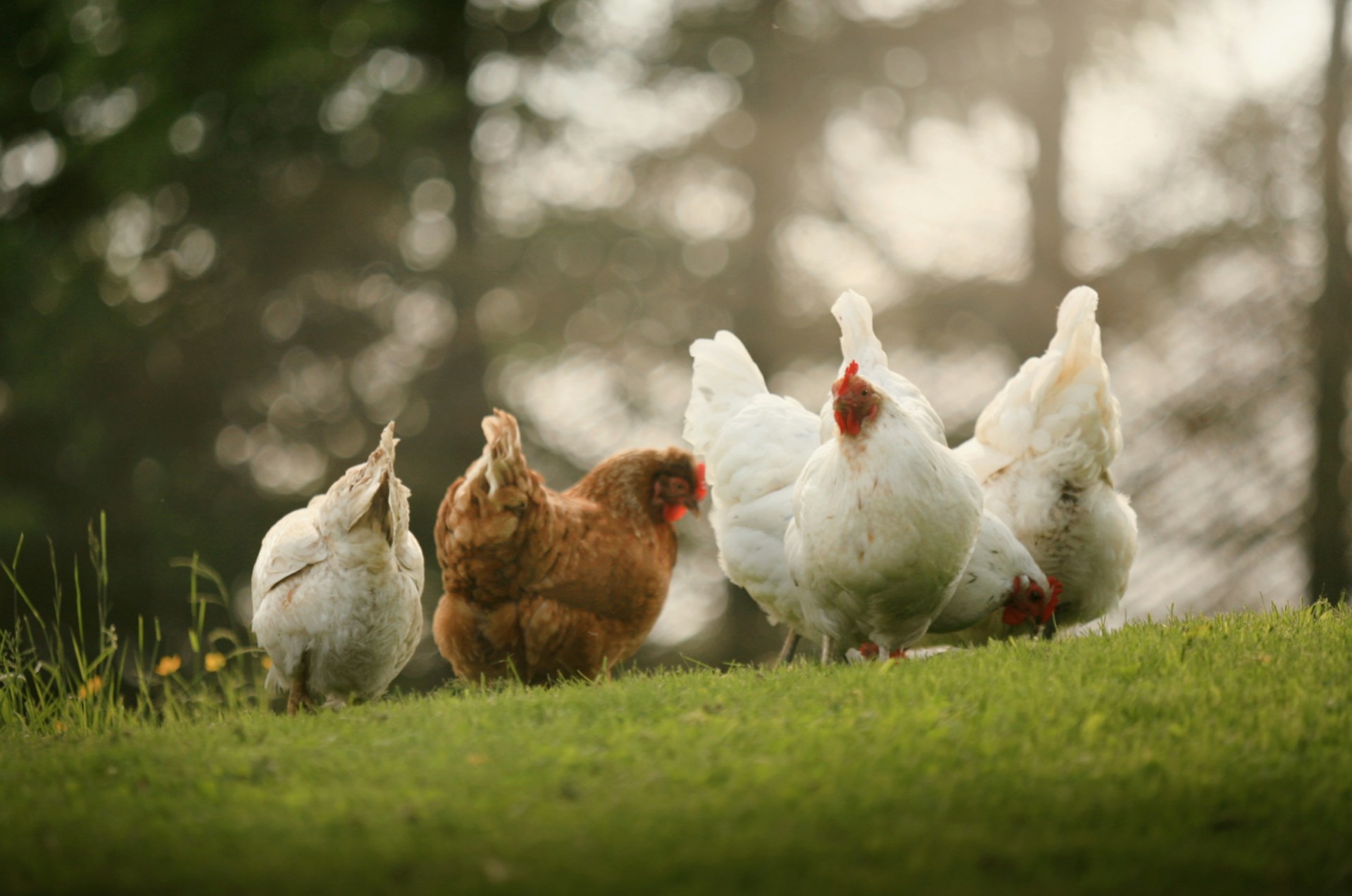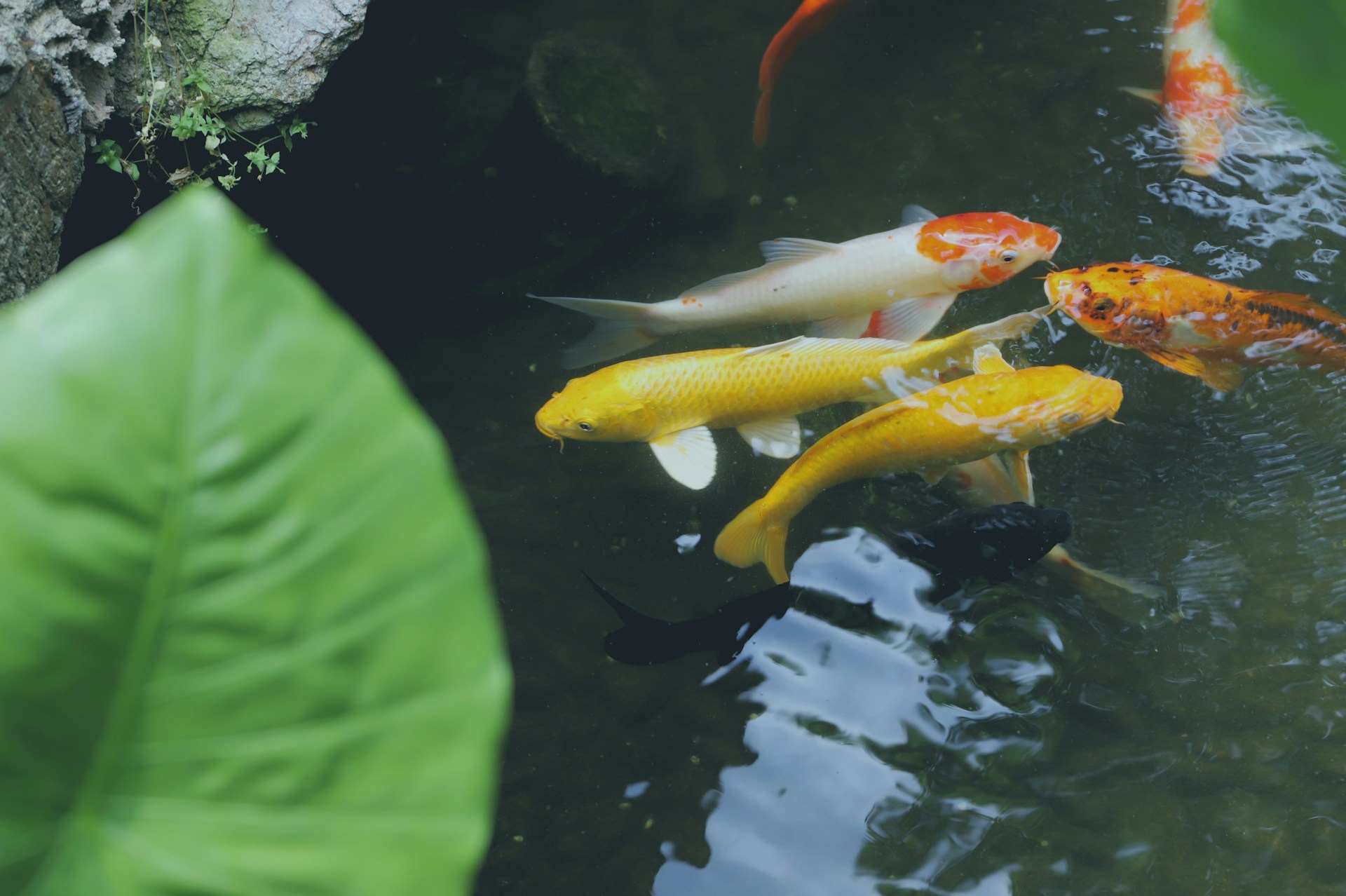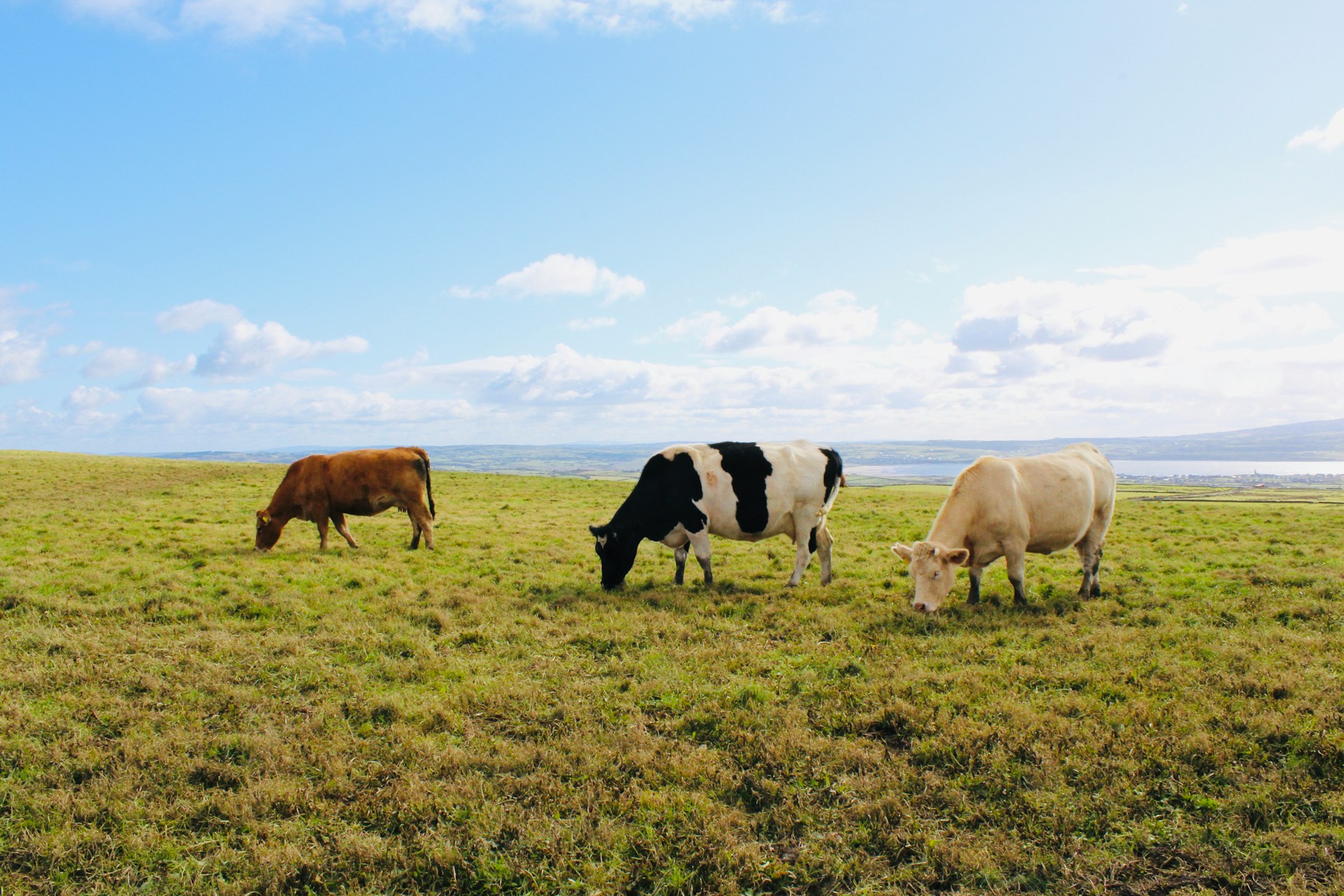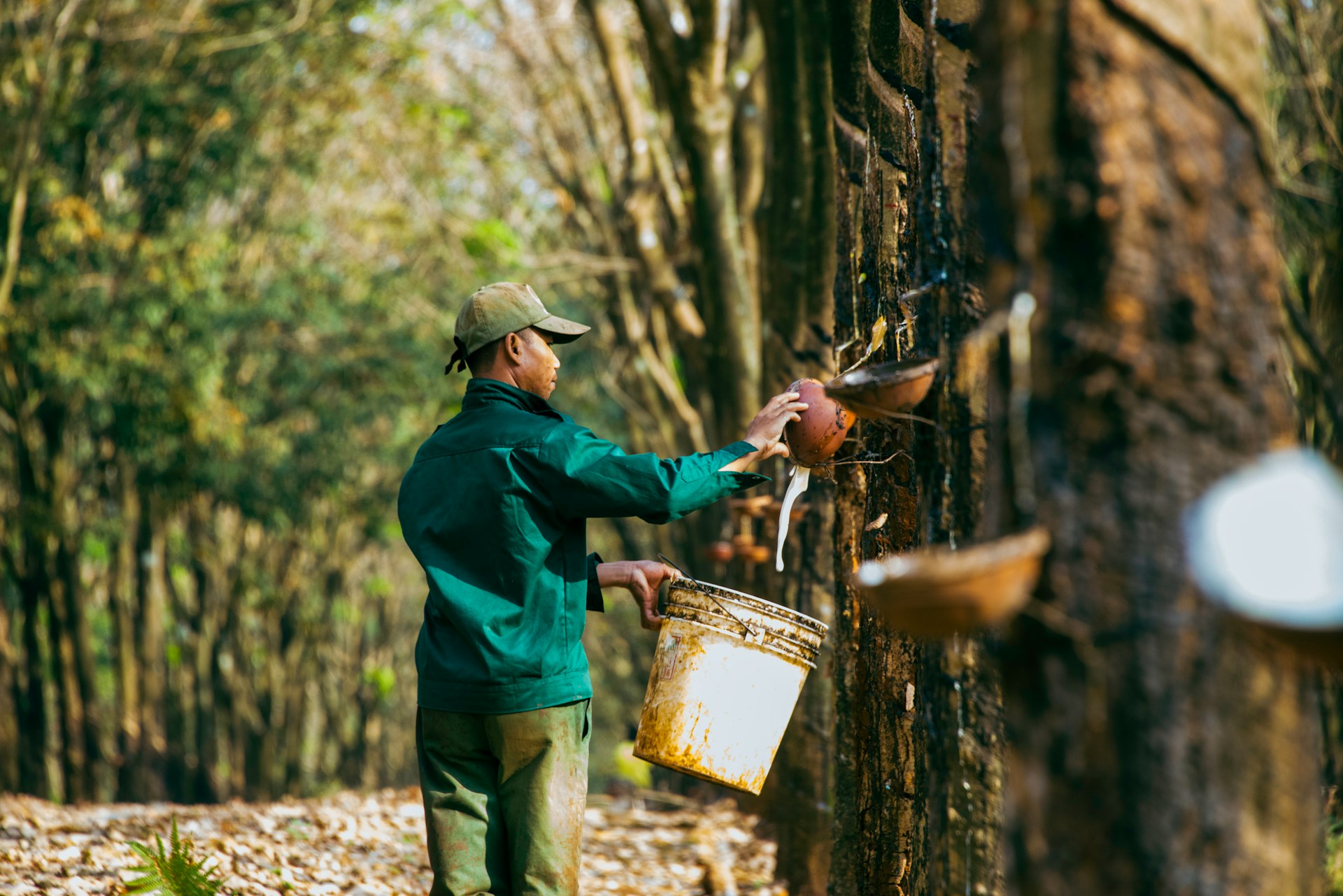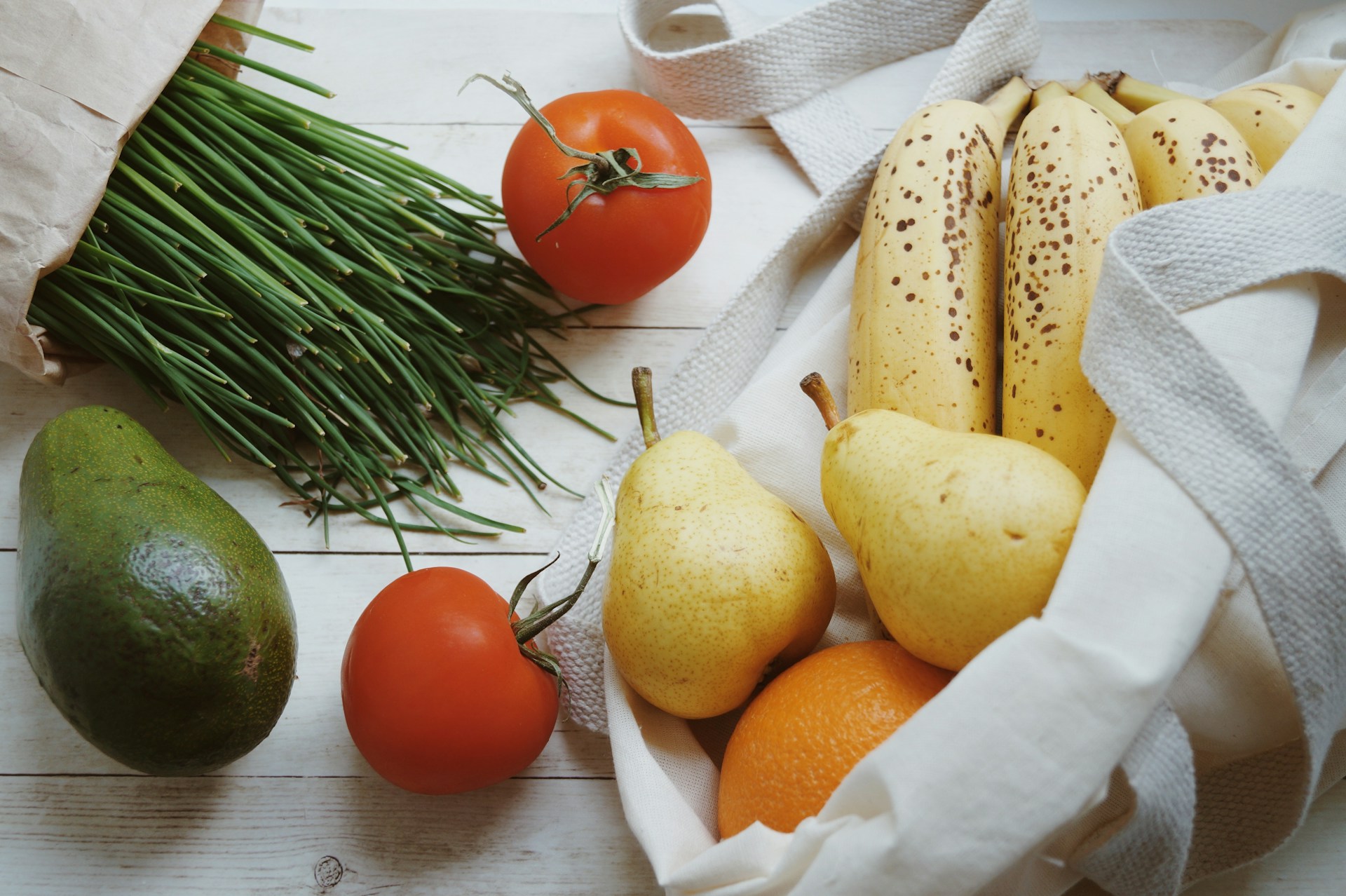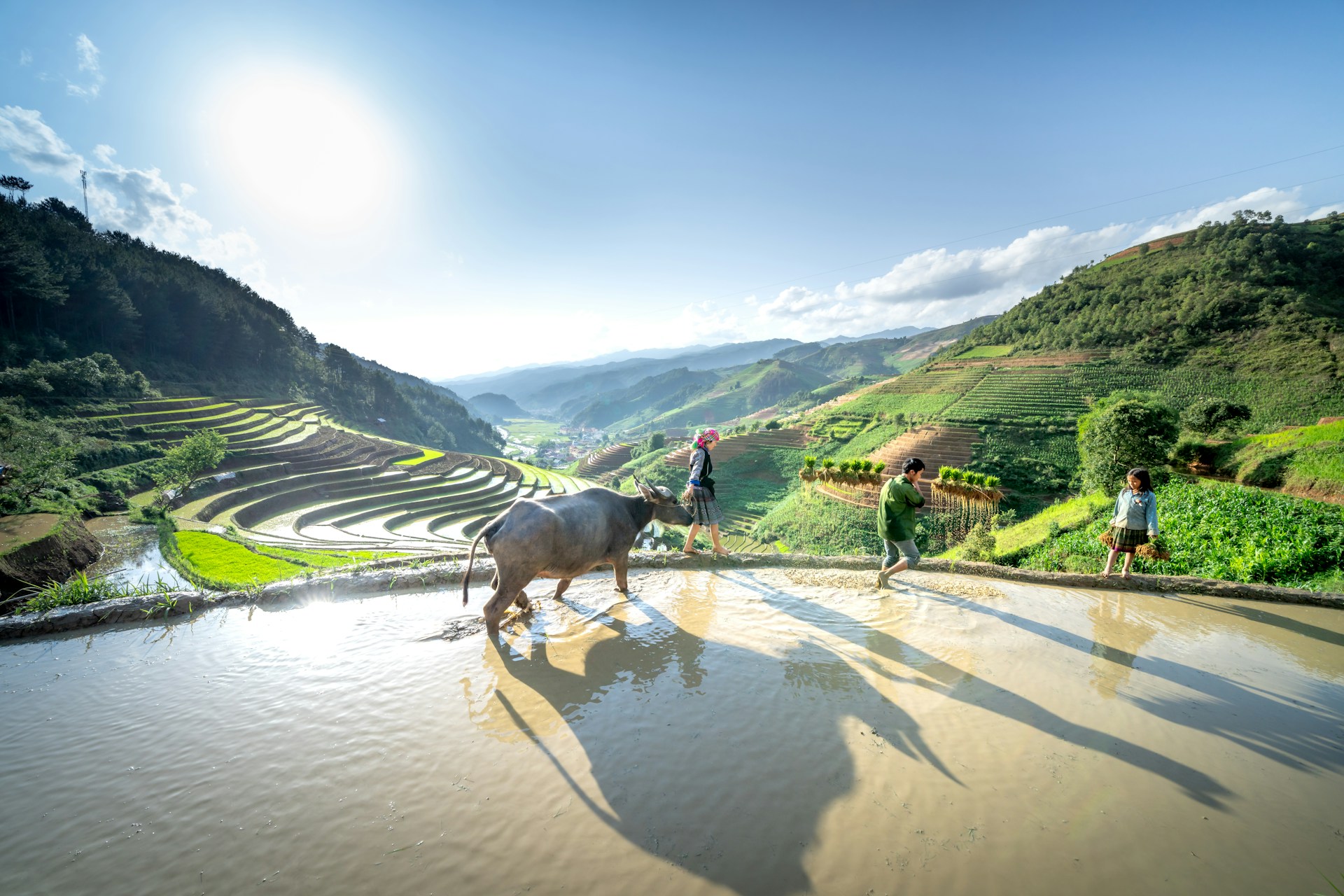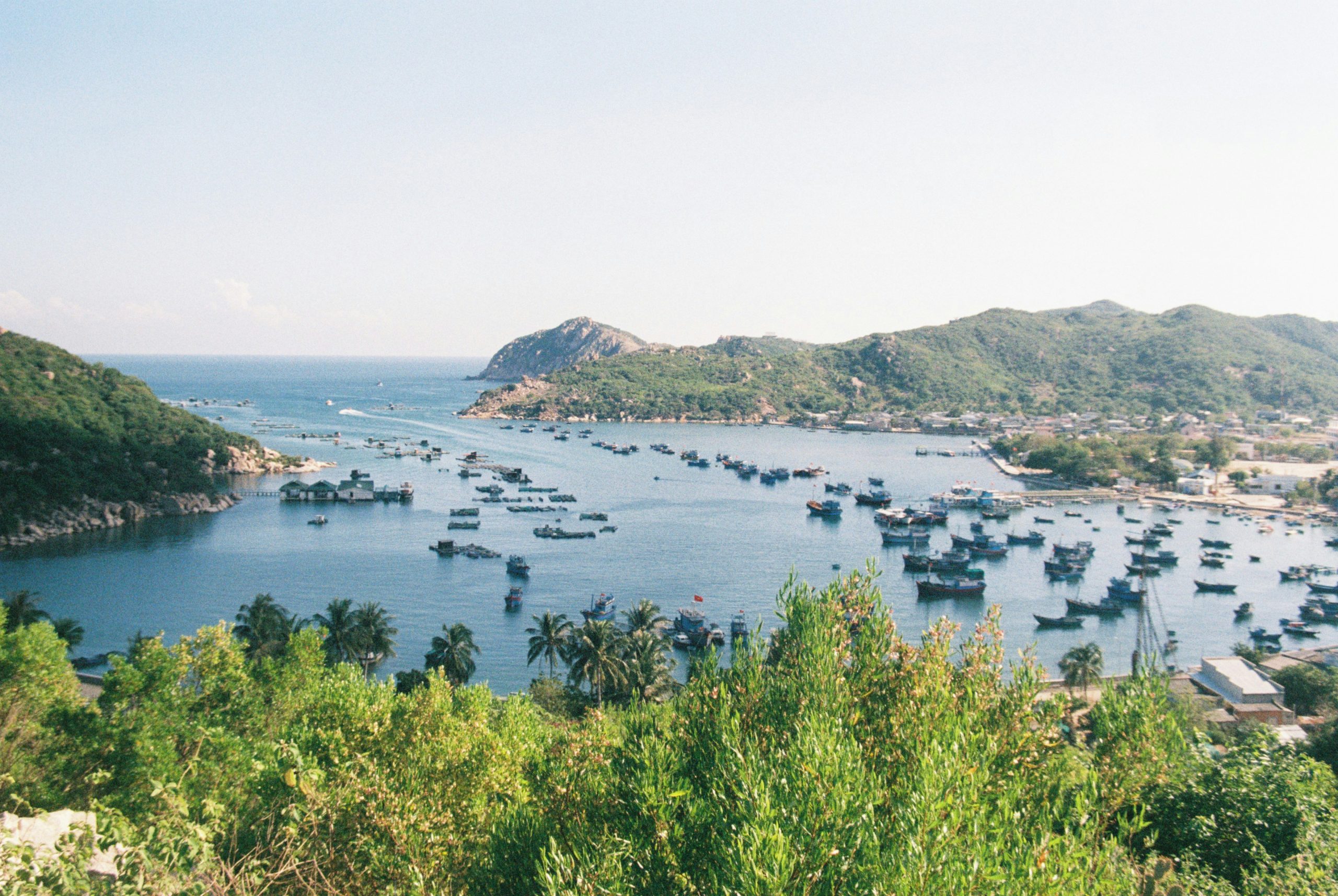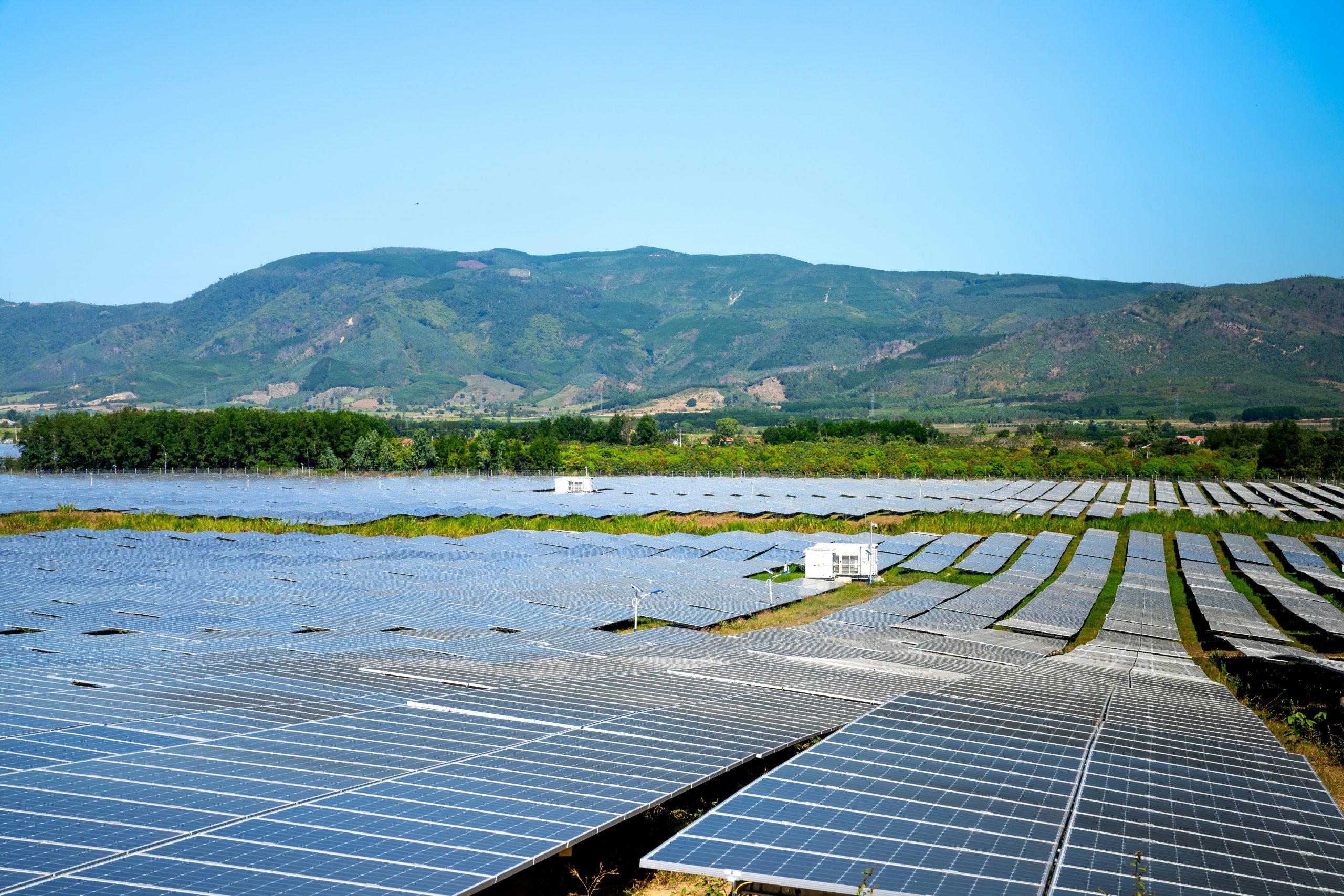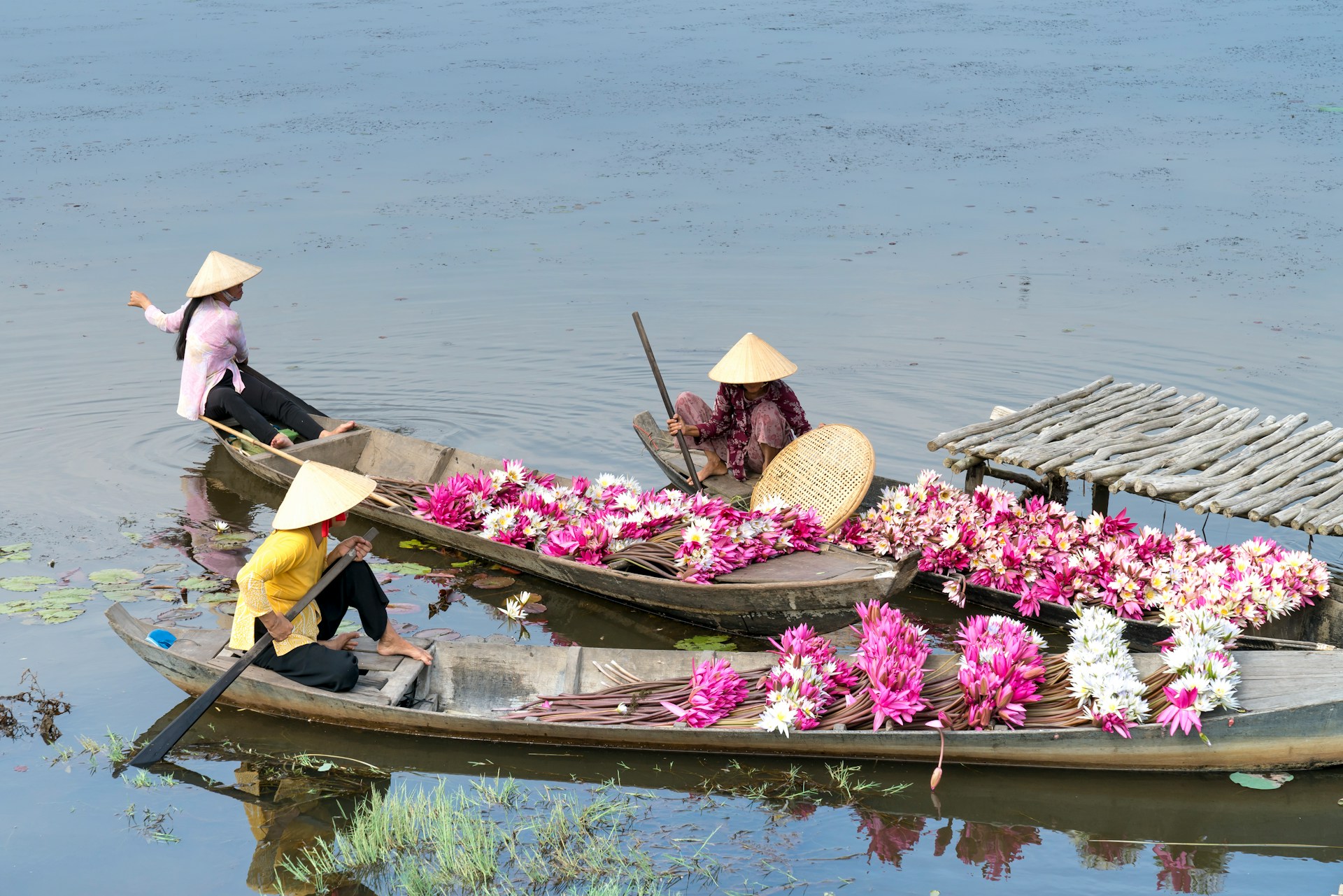
237월2025
최신 뉴스 및 보고서 / 베트남 브리핑
댓글: 댓글 없음.
베트남은 세계 농산물 및 식품 중심지로 도약할 강력한 잠재력을 가진 것으로 널리 알려져 있습니다. 이는 탄탄한 국내 생산 기반과 2024년 1조 4,624억 달러로 사상 최고치를 기록한 수출 급증에 힘입은 것입니다.[1]베트남은 다양한 자연환경, 광범위한 자유무역협정(FTA), 우호적인 정부 정책, 그리고 글로벌 FDI 기업들의 높은 관심 등 상당한 이점을 가지고 있습니다. 그러나 이러한 발전 경로는 높은 물류비, 취약한 심층 가공 역량, 분산된 국가 브랜드, 점점 더 엄격해지는 식품 안전 및 기술 장벽, 그리고 고급 인력 부족과 같은 수많은 어려움에 직면해 있습니다.
베트남의 농업 강점
베트남은 획기적인 발전을 이루고 글로벌 농식품 허브가 되겠다는 야망을 실현하는 데 도움이 될 수 있는 기초적인 강점과 전략적 이점을 보유하고 있습니다.
| 힘 | 세부 |
| 강력한 생산 능력과 수출 모멘텀 | ▪ 풍부한 출력: 2024년, 자연재해와 홍수 등 극심한 기상 현상에도 불구하고 농업 부문은 쌀 생산량이 4,346만 톤에 달하며 국가 식량 안보를 확보했습니다. 수산업(총 생산량: 950만 톤, 전년 대비 25.% 증가)과 임업(벌채량: 2,333만 m³, 전년 대비 79.% 증가)과 같은 고부가가치 부문 또한 인상적인 성장을 기록했습니다.[2].
▪ 기록 수출 가치: 2024년 농림수산품 총 수출액은 1조 4,000억 달러로 2023년 대비 185억 1,000만 달러 증가하여 1조 4,000억 달러의 무역흑자를 기록했습니다. 주요 품목군에서는 과일 및 채소(71억 2,000만 달러), 쌀(57억 5,000만 달러), 커피(54억 8,000만 달러)가 큰 폭으로 증가했습니다. [3]. ▪ 글로벌 시장 진출: 베트남 농산물은 현재 약 200개국과 영토에 수출되고 있으며, 이를 통해 베트남은 동남아시아에서 두 번째로 큰 농산물 수출국이자 세계에서 15번째로 큰 농산물 수출국이라는 지위를 확보했습니다.[4]. |
| 심층적 통합 및 정부 지원 | ▪ 전략적 무역 이점: 베트남은 17개의 FTA를 체결하고 이행하여 60개 이상의 주요 경제국과 광범위한 무역 네트워크를 형성했습니다. 이러한 협정을 통해 관세가 대폭 철폐되거나 인하되어 베트남 제품은 지역 경쟁사보다 경쟁력을 확보할 수 있게 되었습니다.
▪ 명확한 정치적 의지: 정부는 "2050년 비전을 포함한 2021~2030년 지속 가능한 농업 및 농촌 개발 전략"(결정 150/QĐ-TTg)을 발표하여 "생산 중심의 사고방식"에서 "농업 경제 중심의 사고방식"으로 전환하고 부가가치와 지속가능성에 중점을 두었습니다. 또한 정부는 구체적인 정책 조치를 통해 첨단 기술, 유기농, 청정 농업을 장려합니다. |
| 전략적 위치와 강력한 FDI 유입 | ▪ 중심적 위치: 동남아시아의 중심부에 위치하고 주요 국제 운송로와 대규모 소비 시장과 가까운 베트남은 지역 공급망의 중요한 연결 고리가 될 잠재력을 가지고 있으며, 특히 롱탄 국제공항과 같은 주요 인프라 프로젝트가 완공을 앞두고 있습니다.
▪ 촉매적 FDI: 농업 분야 FDI는 빠르게 성장하고 있으며, 2025년 초 기준 약 537개의 활성 프로젝트가 진행 중이고 약 50만 개의 일자리를 창출할 것으로 예상됩니다. 네슬레, 드 휴스, CP 그룹, JBS, 펩시코와 같은 주요 기업들은 자본뿐만 아니라 첨단 기술, 현대적인 경영 방식, 그리고 글로벌 가치 사슬과의 통합을 통해 농업 분야에 투자하고 있습니다.[5]. |
주요 제한 사항 및 과제
엄청난 잠재력에도 불구하고 베트남은 지속 가능한 부문 개발을 위해 해결해야 할 체계적인 약점에 직면해 있습니다.
| 한정 | 세부 |
| 물류 및 콜드체인 병목 현상 | ▪ 과도한 비용: 물류 비용은 농산물 가치의 20~25%를 차지하며, 이는 태국(12%, 12%, 14 ... [6] 이는 태국이 미국, EU, 호주, 중동 등 주요 시장으로 가는 직항편과 해상 항로를 자주 운항하기 때문일 수 있습니다.
▪ 부족한 인프라: 생산 지역과 항구를 연결하는 운송 시스템은 여전히 미개발 상태입니다. 지역 물류 허브가 부족하고, 냉장 보관 시설과 특수 창고 시설도 심각하게 부족합니다. ▪ 수확 후 손실률 높음: 보존 기술이 부족하고 냉장 유통 시스템이 부족하여 수확 후 손실이 심각하며, 특히 과일과 채소의 경우 손실률이 30~35%로 추산되어 막대한 자원 낭비가 발생합니다.[7]. |
| 제한된 심층 처리 및 약한 브랜딩 | ▪ 원자재 수출 의존도: 베트남 농산물 수출의 약 80~90%는 원자재 또는 반가공 형태로, 낮은 부가가치를 창출합니다. 최종 제품을 생산하기 위한 심층 가공 능력의 제한은 농업 부문의 지속 가능한 발전을 저해하는 가장 중요한 "구조적 장벽" 중 하나로 남아 있습니다. [8]
▪ 미개발된 브랜딩: 수출 농산물의 약 80%는 고유한 브랜드, 로고 또는 라벨이 부족합니다. 특히, 거의 80%가 외국 브랜드로 판매되고 있습니다. 이는 악순환을 초래합니다. 심층 가공 없이는 브랜드 제품이 없고, 브랜드가 없으면 시장 인지도가 낮습니다. [9]. |
| 기술적 장벽과 식품 안전 문제 | ▪ 더욱 엄격해진 수입 기준: EU, 일본, 미국, 중국 등 주요 수입국들은 위생 및 식물위생(SPS) 기준을 강화하고 있습니다. 2024년 베트남은 식품 안전 관련 WTO 통보 건수 1,029건으로 역대 최대를 기록했습니다. 2025년 첫 두 달 동안 EU는 베트남 농산물에 대해 4건의 새로운 경고를 발령했습니다.[10].
▪ 더욱 엄격한 추적성 요구 사항: 국제 표준(예: GlobalGAP)을 준수하고 신뢰할 수 있고 투명한 추적성 시스템을 구축하는 것은 고수준 시장에서의 시장 접근 및 지속 가능성을 위한 전제 조건이 되었습니다. |
| 숙련된 인력 부족 | ▪ 노동 위기: 농업 부문은 양적, 질적 측면에서 이중적인 노동력 위기에 직면해 있습니다. 첨단 기술을 적용할 수 있는 전문가와 인력이 부족합니다. 젊고 교육받은 노동자들은 저소득과 제한된 발전 기회로 인해 이 부문을 떠나는 경우가 늘어나고 있으며, 이는 농업 부문의 현대화를 저해하고 있습니다.
▪ 낮은 노동 생산성: 농업 노동 생산성은 모든 경제 부문에서 국가 평균의 38.1%에 불과합니다.[11]. |
베트남은 세계적인 농식품 허브가 될 수 있는 강력한 잠재력을 가지고 있지만, 이 비전을 실현하려면 깊이 뿌리박힌 구조적 장벽을 해소하고 부가가치 전환을 가속화해야 합니다.
B&Company가 농업 분야 FDI 투자자를 지원하는 방법
B&Company는 2008년부터 베트남에서 광범위한 경험을 바탕으로 다음과 같은 주요 서비스 분야를 통해 농업 부문에 관심이 있는 FDI 투자자를 지원할 수 있습니다.
| B&Company 서비스 | 설명 |
| 시장 조사 및 분석 | ▪ 심층적인 산업 보고서: 특정 농업 부문(예: 차 산업 전망, 생산 및 수출 추세, 배출 감소 기술, 농업 부산물 활용)에 대한 포괄적인 분석을 제공합니다.
▪ 맞춤형 시장 조사: 시장 규모, 공급망, 경쟁자, 소비자 선호도를 파악하기 위해 양적 설문 조사(예: 소비자 및 기업 설문 조사)와 질적 인터뷰(예: 심층 인터뷰, 포커스 그룹)를 실시합니다. ▪ 기업 데이터베이스 접근: 잠재적 파트너, 공급업체 또는 고객을 선별, 분석 및 식별하는 데 도움을 줍니다. |
| 시장 진입 및 전략 컨설팅 | ▪ 시장 진입 전략: 기회 평가 및 타겟 세그먼트 식별부터 사업 계획까지 FDI 기업에 맞춤형 진입 전략을 조언하고 개발합니다.
▪ 법률 지원 및 회사 설립: 투자 등록 증명서(IRC), 기업 등록 증명서(ERC) 및 기타 필요한 라이센스 취득을 지원합니다. ▪ 초기 설정 지원: 사무실 설정, 현지 채용, 인력 교육 등 라이선스 취득 이후 업무에 대한 도움을 제공합니다. |
| 비즈니스 매칭 및 파트너 검색 | ▪ 파트너 식별 및 평가: 네트워크와 데이터베이스를 활용하여 잠재적 파트너(예: 유통업체, 합작 투자 파트너, 원자재 공급업체)를 식별, 접근하고 평가합니다.
▪ 회의 및 현장 방문 조정: 생산 현장과 농장 지역으로의 사업 회의 및 현장 견학을 조직하여 직접적인 시장 평가를 실시합니다. ▪ 협상 지원: 초기 협상부터 공식적인 파트너십 계약까지 원활하게 진행합니다. |
| M&A 자문 | ▪ 타겟 식별 및 평가: 투자자의 M&A 전략에 맞는 농업 회사를 식별하고 평가합니다.
▪ 실사 지원: 사업 및 시장 관점에서 대상 회사에 대한 실사 프로세스를 조정합니다. |
[1] 베트남 정부는 2024년 기준 62,4 USD USD | 베트남+(VietnamPlus)
[2] Sản xuất nông, lâm nghiep 및 2024년 đáp ứng nhu cầu trong nuac và xuất khẩu
[3] https://www.vietnamplus.vn/viet-nam-xuat-khau-nong-lam-thuy-san-dat-ky-luc-624-ty-usd-trong-nam-2024-post1004019.vnp
[4] https://www.vietnamplus.vn/viet-nam-xuat-khau-nong-lam-thuy-san-dat-ky-luc-624-ty-usd-trong-nam-2024-post1004019.vnp
[5] Thu hút đầu tù FDI vào nông nghiep: vẫn còn nhiều viđec cần làm
[6] TTWTO VCCI – Chi phí Logistics cao khiến xuất khẩu nông sản nhiều thuận lợi nhung kém cạnh tranh
[7] TTWTO VCCI – Chi phí Logistics cao khiến xuất khẩu nông sản nhiều thuận lợi nhung kém cạnh tranh
[8] Cấp thiết xây dựng thhong hiđu quốc gia cho nông sản Viet
[9] Xây dựng thong hiđu nông sản Viet Nam
[10] 베트남 2024년 1,000통 | BÁO SÀI GÒN GIẢI PHÓNG
[11] Bai-bao-ve-Nong-nghiep-4.0-Duc_KTNN-Lan-2.pdf
* 본 기사의 내용을 인용하고자 하시는 경우, 저작권을 존중하여 출처와 원 기사의 링크를 함께 명시해 주시기 바랍니다.
| 비앤컴퍼니
2008년부터 베트남에서 시장 조사를 전문으로 하는 최초의 일본 기업입니다. 업계 보고서, 업계 인터뷰, 소비자 설문 조사, 비즈니스 매칭을 포함한 광범위한 서비스를 제공합니다. 또한, 최근 베트남에서 900,000개 이상의 기업에 대한 데이터베이스를 개발하여 파트너를 검색하고 시장을 분석하는 데 사용할 수 있습니다. 문의사항이 있으시면 언제든지 문의해주세요. info@b-company.jp + (84) 28 3910 3913 |



